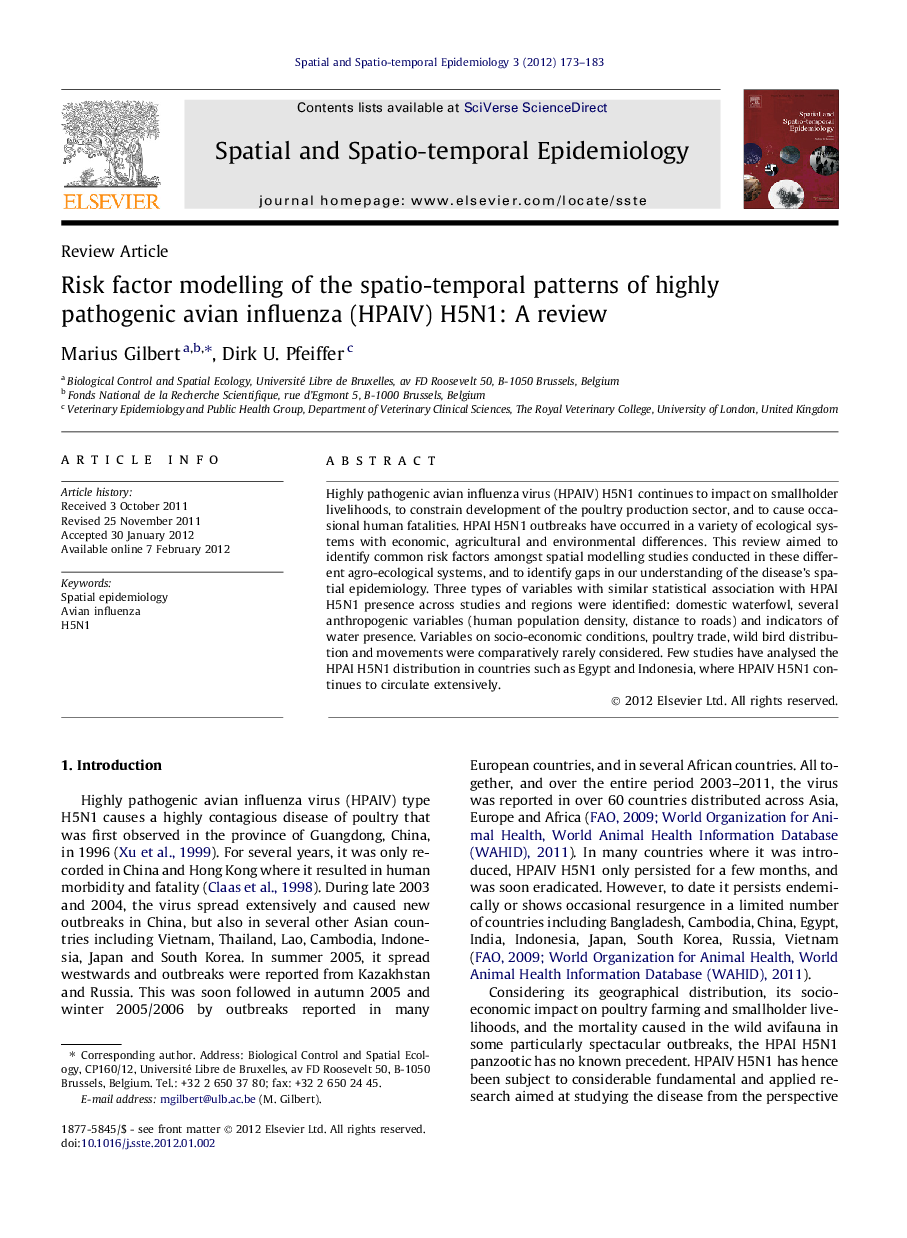| Article ID | Journal | Published Year | Pages | File Type |
|---|---|---|---|---|
| 1064418 | Spatial and Spatio-temporal Epidemiology | 2012 | 11 Pages |
Highly pathogenic avian influenza virus (HPAIV) H5N1 continues to impact on smallholder livelihoods, to constrain development of the poultry production sector, and to cause occasional human fatalities. HPAI H5N1 outbreaks have occurred in a variety of ecological systems with economic, agricultural and environmental differences. This review aimed to identify common risk factors amongst spatial modelling studies conducted in these different agro-ecological systems, and to identify gaps in our understanding of the disease’s spatial epidemiology. Three types of variables with similar statistical association with HPAI H5N1 presence across studies and regions were identified: domestic waterfowl, several anthropogenic variables (human population density, distance to roads) and indicators of water presence. Variables on socio-economic conditions, poultry trade, wild bird distribution and movements were comparatively rarely considered. Few studies have analysed the HPAI H5N1 distribution in countries such as Egypt and Indonesia, where HPAIV H5N1 continues to circulate extensively.
► Highly pathogenic avian influenza virus (HPAIV) H5N1 persists in many countries. ► We review studies analysing the spatio-temporal patterns of HPAI outbreaks. ► Duck and human population, and water-related variable associate with HPAI H5N1 risk. ► Poultry trade, wild bird population and movements were generally overlooked. ► The situation in many important countries has not been studied (e.g. Egypt).
